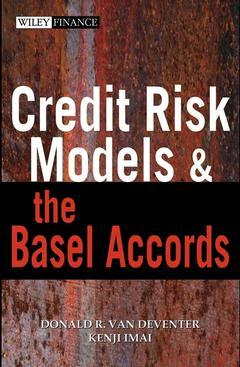Credit risk models & the basel accords
Auteurs : VAN DEVENTER Donald, IMAI Kenji

The Basel Capital Accords place a heavy emphasis on financial institutions' ability to assess credit risk. In this book, two of the world's best known risk management experts assess both the Merton model and reduced form credit models and show exactly how to measure model performance as the Basel Accords require. They use the same tests to assess the likely effectiveness of the Basel Capital Accords in measuring the safety and soundness of financial institutions.
The authors go into great detail in assessing the ability of leading credit models to evaluate collateralized debt obligations, loan commitments, collateralized loans, as well as retail and small business loan portfolios.
Credit Risk Models and the Basel Accords reviews the objectives of the credit risk management process, introduces the theory of the Merton and reduced form credit models, shows how the models can be used in practice, and then examines a wide range of historical data to show the relative performance of the models in practice.
This book offers a balanced review of the newer reduced form models and the older Merton model.It is an invaluable guide for financial institutions striving to meet the requirements of the new Basel Accord. It is a book that thoroughly reviews the pros and cons of both classes of credit model. The Basel Accords ensure that financial institutions do more than just have a model they must also understand how they work. This book will help to fulfill that requirement of the new Basel Accords.
1. The Objectives of the Credit Risk Process
2. The Asian Crisis: Lessons for Maximizing Risk adjusted Shareholder Value
3. The Evolution of Credit Modeling Techniques
4. Credit Risk Models: The Impact of Macro Factors on the Risk of Default
5. Internal Ratings and Approaches to Testing Credit Models
6. Tests of Credit Models using Historical Default Data
7. Market Data Tests of Credit Models: Lessons from Enron and Other Case Studies
8. Out of Sample Testing of Credit Models
9. Implications of the Tests for the Basel Accords and Management of Financial Institutions
10. Measuring Safety and Soundness and Capital Allocation Using the Merton and Reduced Form Models
11. Impact of Collateral on Valuation Models
12. Pricing and Valuing Revolving Credit and Other Loan Agreements
13. Credit Derivatives and Collateralized Debt Obligations
14. Future Developments in Credit Modeling
Index
Date de parution : 05-2003
Ouvrage de 300 p.
23.7x16.4 cm
Épuisé



